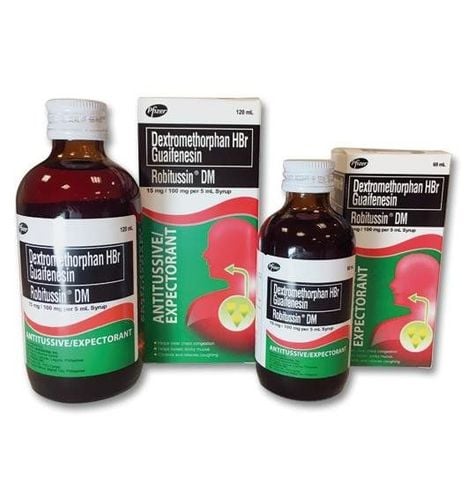This is an automatically translated article.
Upper respiratory tract infections requiring antibiotics in children are one of the most common problems encountered by general practitioners. Although complications from upper respiratory tract infections in infants and young children are rare, antibiotics offer little or no benefit in uncomplicated cases. However, prescribing antibiotics has been made too easy, with many long-term consequences.
1. Do children with upper respiratory infections need antibiotics?
Children including infants with upper respiratory tract infections are the most common reason parents refer their children to a general practitioner or pediatrician more than any other age group. In general, nearly all preschool children see their doctor at least once a year for upper respiratory symptoms such as coughs, colds, earaches, and fevers.
Most GPs know that upper respiratory tract infections in children are usually a self-limited and uncomplicated viral illness. However, a high proportion of upper respiratory tract infections in children are treated with antibiotic prescriptions.
The principles of treatment in infants with upper respiratory tract infections are:
Do not prescribe antibiotics; Prescription may be postponed 1 day later if symptoms worsen; Immediate antibiotic prescribing may be considered in certain situations or populations, for example those with systemic disease.
2. What are the common side effects of antibiotics in children?
Thus, the arbitrary use of antibiotic groups to treat upper respiratory tract infections in young children may not be necessary, especially in cases where the cause is viral. On the contrary, the overuse of antibiotics in young children can affect their health. Accordingly, common side effects of antibiotics in young children can include:
2.1 Antibiotic-associated diarrhea Diarrhea after taking antibiotics is a very common side effect in children. Up to 30% of children will have diarrhea while they are still taking antibiotics, or up to 8 weeks after they finish taking them. Certain classes of antibiotics for upper respiratory infections, such as cephalosporins, clindamycin, and some penicillins, are more likely to cause diarrhea.
2.2 Allergic Reactions Antibiotics can cause allergic reactions that may be immediate or delayed. Allergy-related rashes can be raised or smooth and are often red. The rash can be itchy and can last for weeks.
2.3 Allergy to Common Antibiotics Different types of rashes can appear in response to antibiotics. The rash can develop immediately, or even weeks after the child has stopped taking the medicine. Drug-related rashes can be:
Redness and peeling; Red or purple, raised skin; Red and flat. 2.3 Yeast infections Antibiotics kill both good and bad bacteria in the body, which makes it easier for yeast to grow. This can lead to a yeast infection, which can affect the mouth, known as thrush, as well as the navel, genitals, or nail beds.
2.4 Yellow teeth Tetracycline, an antibiotic in the class of antibiotics for upper respiratory tract infections, is associated with an increased risk of tooth discoloration when given to children under 8 years of age.
Another antibiotic, called amoxicillin, can also cause teeth to yellow. One study reported that toddlers aged 20 to 24 months who took medication had a higher risk of tooth staining later in life.
2.5 Fever Although often overlooked as a side effect, some antibiotics, such as cephalosporins and penicillins, have been associated with drug-induced fever. Fever usually starts a week after taking the medicine, but may go away as soon as the child finishes taking the antibiotics.
3. What happens when a child is abused with antibiotics?
Taking antibiotics for upper respiratory tract infections in babies and other viral illnesses doesn't work - and it can make it harder for bacteria to kill.
Taking antibiotics too often or for the wrong reason can change bacterial strains so much that antibiotics can't fight them. This is called bacterial resistance or antibiotic resistance. Some bacteria are now resistant to even the strongest antibiotics available.
4. What can parents do?
Every family faces colds, sore throats and viral bronchitis at least once a year. When taking a child to the doctor for these conditions, it is important that parents do not expect an antibiotic prescription.
To reduce the risk of bacterial drug resistance and prevent the overuse of antibiotics when babies have upper respiratory tract infections, parents need to:
Ask the doctor if their child's illness is caused by bacteria or viruses. If it's a virus, ask about treating the symptoms instead of expecting an antibiotic prescription. Let the milder illnesses (especially those caused by viruses) subside on their own with the body's resistance. This helps prevent germs from becoming resistant to antibiotics. Antibiotics must be taken for the full length of time prescribed by your doctor. Do not let your child take antibiotics for longer than prescribed. Do not use leftover antibiotics or save extra antibiotics “for next time”. Do not give your child antibiotics that have been prescribed to another family member or adult. It's also important for parents to make sure their children are vaccinated on schedule, stay home from school when they're sick, and wash their hands frequently and cleanly. In summary, upper respiratory tract infections are common in both children and adults, with the main cause being a virus that causes mild illness. Accordingly, it is unnecessary for upper respiratory tract infections to require antibiotics. Overuse of antibiotics when not prescribed not only makes the treatment more effective, but also exposes children to antibiotic side effects as well as the risk of long-term resistance.
Please dial HOTLINE for more information or register for an appointment HERE. Download MyVinmec app to make appointments faster and to manage your bookings easily.













